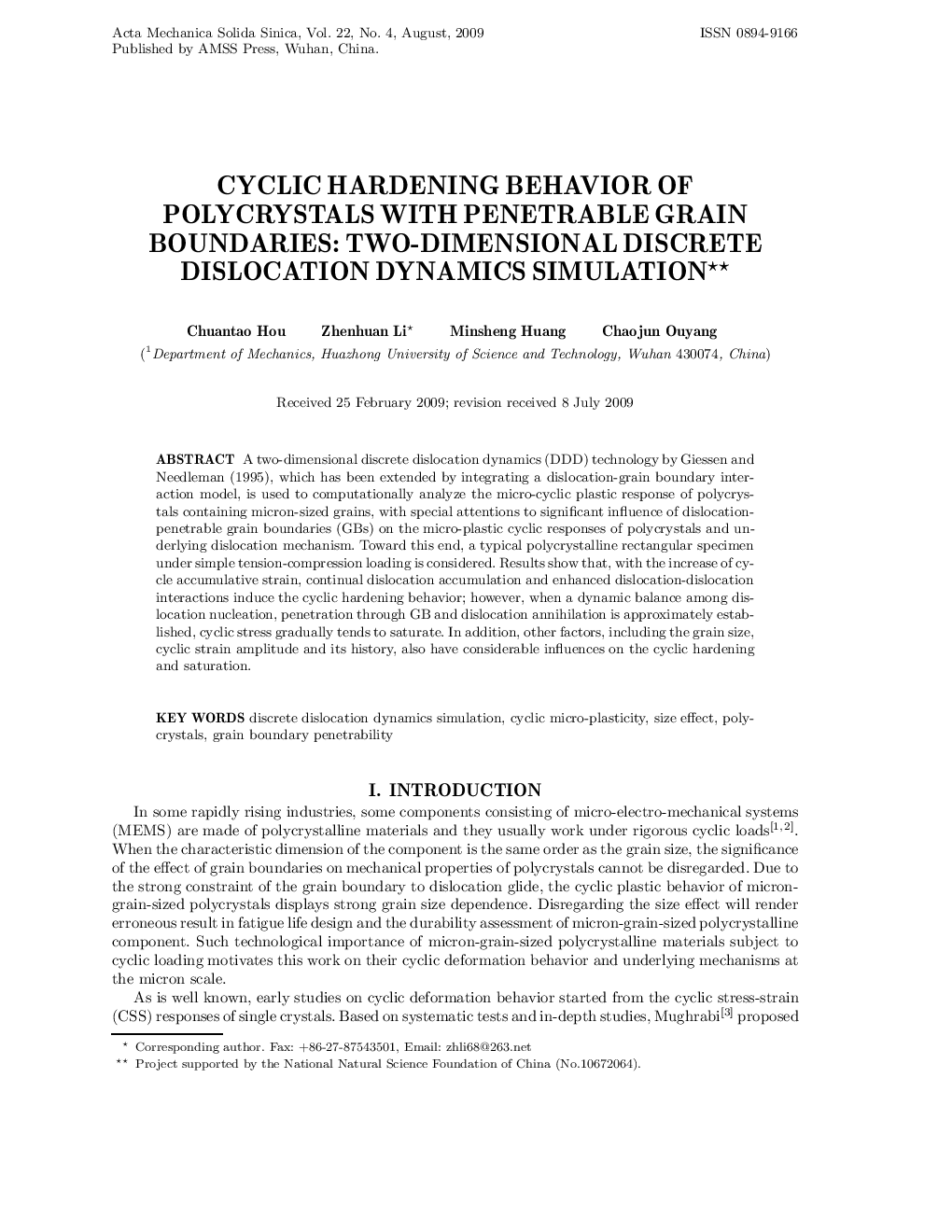| Article ID | Journal | Published Year | Pages | File Type |
|---|---|---|---|---|
| 754301 | Acta Mechanica Solida Sinica | 2009 | 12 Pages |
A two-dimensional discrete dislocation dynamics (DDD) technology by Giessen and Needleman (1995), which has been extended by integrating a dislocation-grain boundary interaction model, is used to computationally analyze the micro-cyclic plastic response of polycrystals containing micron-sized grains, with special attentions to significant influence of dislocation-penetrable grain boundaries (GBs) on the micro-plastic cyclic responses of polycrystals and underlying dislocation mechanism. Toward this end, a typical polycrystalline rectangular specimen under simple tension-compression loading is considered. Results show that, with the increase of cycle accumulative strain, continual dislocation accumulation and enhanced dislocation-dislocation interactions induce the cyclic hardening behavior; however, when a dynamic balance among dislocation nucleation, penetration through GB and dislocation annihilation is approximately established, cyclic stress gradually tends to saturate. In addition, other factors, including the grain size, cyclic strain amplitude and its history, also have considerable influences on the cyclic hardening and saturation.
